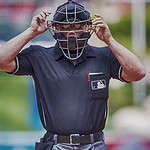A crooked number in baseball is a term used to describe any inning in which a team scores two or more runs. It is called a crooked number because the scorecard looks more interesting with a number other than one in the runs column. The term has been in use for decades and is well-known among baseball fans.
Scoring a crooked number can be a game-changer for a team. It can turn a close game into a blowout or give a team the momentum they need to come back from a deficit. In fact, many coaches and players will tell you that scoring crooked numbers is one of the keys to winning games. Understanding what a crooked number is and how to score one can be an important part of a team’s strategy.

What is a Crooked Number in Baseball?
In baseball, a crooked number is a term used to describe a score of two or more runs in a single inning. The term “crooked” is used because the scorecard typically uses a straight line to represent a score of 1 and a diagonal line to represent a score of 2 or more.
A crooked number is significant because it can quickly change the momentum of a game. For example, if a team is down by one run and scores three runs in a single inning, they have now taken the lead and put pressure on the opposing team to catch up.
In addition to changing the score, a crooked number can also impact the opposing team’s pitching strategy. If a team scores multiple runs in an inning, the opposing team may need to make a pitching change to try and stop the momentum.
It’s important to note that a crooked number can also refer to a score of three or more runs in a single at-bat, such as a home run with the bases loaded.
Overall, a crooked number is a significant and exciting part of baseball that can quickly change the course of a game.
Scoring in Baseball
Runs and Hits
In baseball, the ultimate goal is to score runs. Runs are scored when a player hits the ball and successfully makes it around the bases to touch home plate. A hit is any time a batter puts the ball in play and reaches base safely. Hits can be singles, doubles, triples, or home runs.
Scoring a Run
To score a run, a player must touch all four bases in order and touch home plate before the opposing team can make three outs. The team with the most runs at the end of the game wins.
Crooked Numbers
A crooked number is when a team scores two or more runs in a single inning. This is significant because it can often lead to a momentum shift in the game. A team that is struggling to score runs can suddenly break out with a big inning and gain confidence and momentum.

Big Innings
A big inning is when a team scores several runs in a single inning. This can be the result of clutch hitting, errors by the opposing team, stolen bases, extra-base hits, or a combination of these factors. Big innings can be crucial in determining the outcome of a game.
When a team puts up a big inning, it can put pressure on the opposing team to match their scoring output. This can lead to a rally, where the opposing team tries to score as many runs as possible to catch up. The scoreboard can quickly change in a game with a big inning, and the team that was losing can suddenly be winning.
Conclusion
In conclusion, scoring runs is the ultimate goal in baseball. Crooked numbers and big innings can be game-changers, leading to momentum shifts and exciting rallies. A team’s offense is crucial in winning games, and a sequence of hits and runs can quickly change the outcome of a game.
History of the Term Crooked Number
The term “crooked number” is a commonly used baseball term that refers to any number that is not a zero or a one in a team’s score. The term has been in use for many years and has become a staple of baseball jargon.
The origins of the phrase are not entirely clear, but it is believed to have originated in the early days of baseball. One theory suggests that it may have come from the fact that numbers that are not straight (or “crooked”) are more difficult to read and keep track of on a scoreboard.
Another theory suggests that the term may have come from the fact that a crooked number on the scoreboard can be a sign of trouble for the opposing team. For example, if a team scores three runs in an inning, the opposing team may start to feel the pressure and become more likely to make mistakes.
Regardless of its origins, the term “crooked number” has become an integral part of baseball terminology. It is used by players, coaches, and commentators alike to describe any score that is not a zero or a one.
In recent years, the term has also been used more broadly to describe any situation in which a team is in a difficult or precarious position. For example, if a team is down by several runs in the late innings of a game, they may be said to be facing a “crooked number” deficit.
Overall, the term “crooked number” is a colorful and evocative way to describe a team’s score in a baseball game. It has a long history in the sport and is likely to remain a fixture of baseball jargon for many years to come.
Crooked Numbers and Pitching
Pitching and Crooked Numbers
Pitching is a critical component of baseball, and it plays a significant role in determining whether a team will give up crooked numbers or not. A crooked number is a term used in baseball to describe an inning in which a team scores two or more runs.
The ability of a pitcher to prevent crooked numbers is a crucial skill in baseball. A pitcher who can prevent the opposition from scoring more than one run in an inning can keep their team in the game. On the other hand, a pitcher who frequently gives up crooked numbers can put their team in a hole that is tough to climb out of.
A pitcher’s ERA (earned run average) is a key metric that can demonstrate their ability to prevent crooked numbers. A lower ERA indicates that a pitcher is more effective at preventing runs from being scored. An ace pitcher is typically a team’s top starting pitcher who has a low ERA and can prevent crooked numbers. A closer is a relief pitcher who comes in to pitch in the ninth inning to protect a lead and prevent crooked numbers.
Crooked Number Innings
Crooked number innings can occur when the opposition takes advantage of mistakes made by the pitcher or when the pitcher struggles to get outs with runners on base. A pitcher who frequently gives up crooked number innings can be a liability to their team and negatively impact player performance.
One way to prevent crooked number innings is to limit the number of runners on base. Pitchers can achieve this by pitching effectively and avoiding mistakes that allow runners to get on base. Once runners are on base, a pitcher can limit the damage by focusing on getting outs and avoiding mistakes that allow runners to advance.
In conclusion, pitching plays a significant role in determining whether a team gives up crooked numbers or not. A pitcher’s ability to prevent crooked number innings is a critical skill that can impact player performance and determine the outcome of a game.
The Importance of Crooked Numbers
In baseball, a “crooked number” refers to a score that is greater than one. For example, a score of 3-0 is not considered a crooked number, but a score of 5-0 or 10-2 is. The importance of crooked numbers in baseball cannot be overstated.
First and foremost, crooked numbers are essential for winning games. A team that consistently scores crooked numbers is more likely to come out on top. This is because crooked numbers put pressure on the opposing team and can shift the momentum of the game. A team that is down by a crooked number may feel demoralized, while a team that is up by a crooked number may feel energized.
Crooked numbers can also have an impact on the overall score line of a game. A team that scores crooked numbers throughout a game may end up with a much higher score than a team that only scores single runs. This can be particularly important in high-scoring games or in games where the weather conditions favor offense.
In addition to their impact on individual games, crooked numbers can also have an impact on the overall season. Teams that consistently score crooked numbers may be more likely to make the playoffs or win championships. This is because crooked numbers are a sign of a strong offense and can help a team overcome defensive shortcomings.
Commentators and analysts often pay close attention to crooked numbers during a game. They may note when a team has scored their first crooked number or when a team has gone several innings without scoring a crooked number. These observations can help fans understand the ebb and flow of a game and can provide insight into a team’s offensive strategy.
Finally, crooked numbers are an important part of the scorecard. Fans and analysts use the scorecard to keep track of the game and to analyze individual player performances. Crooked numbers are often highlighted on the scorecard to draw attention to particularly impressive offensive performances.
In conclusion, crooked numbers are an essential part of baseball. They can impact individual games, the overall score line, the momentum of a game, and the course of an entire season. Understanding the importance of crooked numbers is essential for any fan or analyst who wants to truly understand the game of baseball.
Notable Crooked Number Games
Crooked number games are a common occurrence in baseball, but some stand out more than others. Here are a few notable games where a team put up a crooked number on the scoreboard.
Boston Red Sox vs. New York Yankees (May 21, 2006)
In this game, the Red Sox scored 7 runs in the 6th inning against the Yankees, including a grand slam by Mark Loretta. The final score was 14-3 in favor of the Red Sox. Both teams had strong offenses, but the Red Sox were able to capitalize on their opportunities and put up a crooked number that the Yankees were unable to match.
Philadelphia Phillies vs. St. Louis Cardinals (May 7, 2010)
The Phillies scored 10 runs in the 1st inning against the Cardinals, with Ryan Howard hitting a grand slam. The final score was 10-2 in favor of the Phillies. The Cardinals were unable to recover from the early deficit, and the Phillies’ offense was too much for them to handle.
Detroit Tigers vs. Texas Rangers (June 26, 2016)
The Tigers scored 9 runs in the 5th inning against the Rangers, with Victor Martinez hitting a grand slam. The final score was 12-0 in favor of the Tigers. The Rangers’ starting pitcher, Derek Holland, struggled in the inning and was unable to stop the Tigers’ offense.
Baltimore Orioles vs. Boston Red Sox (April 20, 2017)
The Orioles scored 12 runs in the 1st inning against the Red Sox, setting a new American League record for most runs scored in the 1st inning. The final score was 16-3 in favor of the Orioles. The Red Sox’s starting pitcher, Drew Pomeranz, had a rough outing and was unable to stop the Orioles’ offense.
In all of these games, the winning team’s offense was able to put up a crooked number and take control of the game. While some of the losing teams had strong offenses, they were unable to match the winning team’s scoring output. These games serve as a reminder of the importance of a strong offense in baseball and the impact it can have on the outcome of a game.
- Fenway Park Seating Chart: Best Seats To See the Red Sox - July 17, 2023
- What is RBI in Baseball: A Simple Explanation of The “Ribby” - July 3, 2023
- What is DFA in Baseball? A Term No Player Wants to Hear - July 3, 2023








